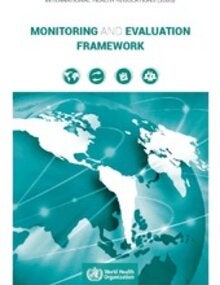OverviewThe International Health Regulations (IHR)1 was first adopted by the World Health Assembly (WHA) in 1969 and covered six diseases. The Regulations were amended in 1973, and again in 1981, to focus on just three: cholera, yellow fever, and plague. In 1995, in consideration of increases in international travel and trade, and the emergence, re-emergence and international spread of diseases and other threats, the WHA called for another substantial revision. This revision extended the scope of the IHR from a limited number of diseases to any potential public health emergency of international concern, irrespective of origin or source, including those involving the natural, accidental or deliberate release of biological, chemical or radio-nuclear materials. The revised IHR, or IHR (2005), entered into force on 15 June 2007. This document henceforth refers to the IHR (2005) as ‘the IHR.’ This document proposes a framework and processes by which States Parties can monitor and evaluate the implementation of IHR capacities in accordance with the requirements for capacity development outlined in Annex 1 of the IHR. It also contributes to Article 548 of the IHR, which calls on States Parties and WHO to report to the WHA on the implementation of the IHR. This framework encourages the use of existing available information from other monitoring and evaluation tools to avoid duplication and to help ensure countries are not overburdened. |

